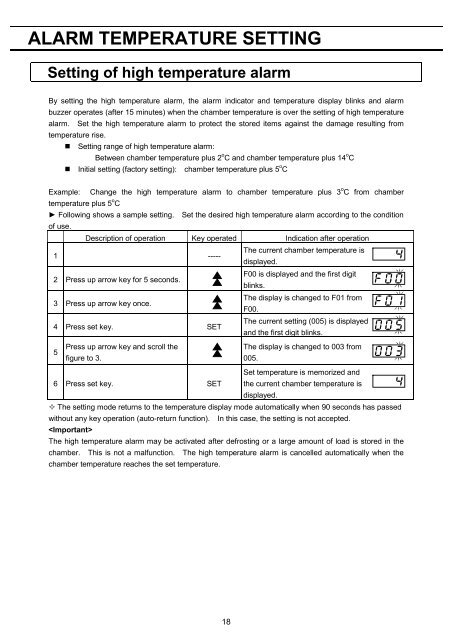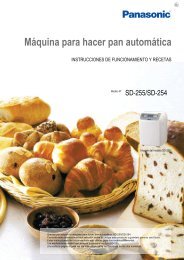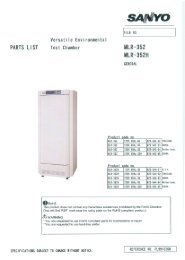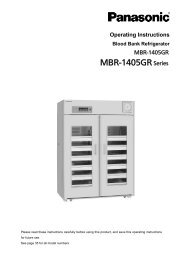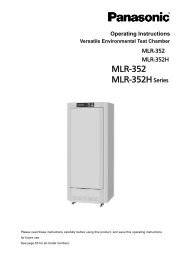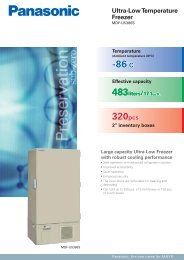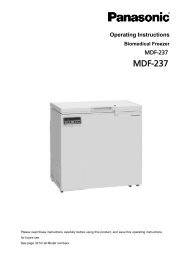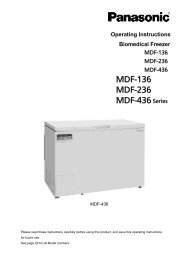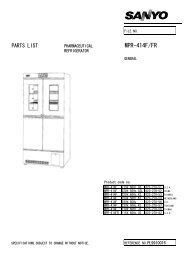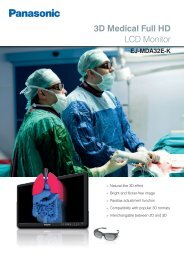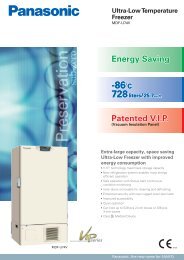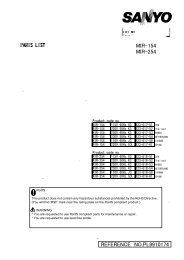Download - Panasonic Biomedical
Download - Panasonic Biomedical
Download - Panasonic Biomedical
You also want an ePaper? Increase the reach of your titles
YUMPU automatically turns print PDFs into web optimized ePapers that Google loves.
ALARM TEMPERATURE SETTINGSetting of high temperature alarmBy setting the high temperature alarm, the alarm indicator and temperature display blinks and alarmbuzzer operates (after 15 minutes) when the chamber temperature is over the setting of high temperaturealarm. Set the high temperature alarm to protect the stored items against the damage resulting fromtemperature rise.Setting range of high temperature alarm:Between chamber temperature plus 2 o C and chamber temperature plus 14 o CInitial setting (factory setting): chamber temperature plus 5 o CExample: Change the high temperature alarm to chamber temperature plus 3 o C from chambertemperature plus 5 o CFollowing shows a sample setting. Set the desired high temperature alarm according to the conditionof use.Description of operation Key operated Indication after operation1 -----The current chamber temperature isdisplayed.2 Press up arrow key for 5 seconds.F00 is displayed and the first digitblinks.3 Press up arrow key once.The display is changed to F01 fromF00.4 Press set key. SETThe current setting (005) is displayedand the first digit blinks.5Press up arrow key and scroll thefigure to 3.The display is changed to 003 from005.6 Press set key. SETSet temperature is memorized andthe current chamber temperature isdisplayed.The setting mode returns to the temperature display mode automatically when 90 seconds has passedwithout any key operation (auto-return function). In this case, the setting is not accepted.The high temperature alarm may be activated after defrosting or a large amount of load is stored in thechamber. This is not a malfunction. The high temperature alarm is cancelled automatically when thechamber temperature reaches the set temperature.18


